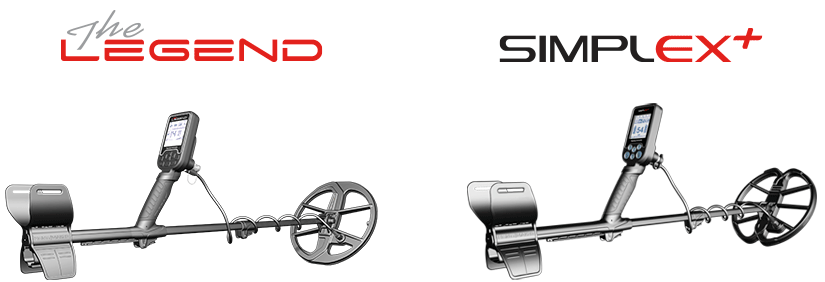Per Monte's Post
Extra Underground Depth, or E.U.D., can be accessed momentarily by pressing and holding down the
E.U.D. button, or you can turn it 'On' (and later turn it off) by dubble-pressing the E.U.D. button. When
activated, the search mode you are using with have a blinking fame around it.. It is only accessible
when using the 2-Tone, 3-Tone, 4-Tine and Deep modes. It is not functional in either the GEN (All
Metal) or Beach modes.
When in use there is no discrimination of ferrous or non-ferrous metal objects, and the search mode's
Tone ID is also bypassed as the device will produce the same audio tone for all metals, of any type,
that are detected. Using the Multi-KRUZER 'sample' device I have searched two locations were I have
made use of this new function. For decades I have used a few test pieces in seminars and individualinstruction to show different challenges we might encounter. One is my Nail Board Performance Test
to evaluate the detect/coil behavior at handling dense iron nail littered sites, such as where old
structures were torn down or burned down leaving nails about.
Another tough challenge was when I used what I called my "Homestead Rock" to demonstrate the
challenges of dealing with an I.M.B. ... aka an Intense Mineral Body. I have long hunted homesteads
or other former habitations where somewhat flattish rocks have been used to build chimneys, walls,
foundations, walls around wells, etc., etc. My 'Homestead' Rock' example measured about 61⁄2" X 9" X
2" thick or slightly thicker. Often I have located such old habitations only to find that the chimneys or
walls have decayed and crumbled, fallen down, resulting in a scattering of similar rocks around on the
ground.
It is challenging to deal with a lot of different I.M.B. challenges and I can assure you not all detectors
can handle it in any motion-based Discriminate mode. Working that location last week gave me the
opportunity to check out the Multi-KRUZER's E.U.D. function and it worked well. Rather than having to
move or kick-away every challenging rock that was now scattered about the old homesite, I simply
search the general area, and when I came to one or more 'Homestead Rocks' from the crumbled old
chimney and one-sided stone wall, I just activated E.U.D. momentarily and continued searching over
the rocks.
Since there was activity around the structure, there's always the possibility of something desirous
being lost and then being covered or 'masked' by the challenging rock. Unfortunately I didn't find any
old coins, but I did get a good signal on a covered-up 4-hole metal button and a couple of small pieces
of metal debris, both ferrous and non-ferrous.
Another place where I tried E.U.D. was working an old CCC Camp location that was later used during
WW-II as an Internment Camp. The selected area there was the modern road as they have turned the
old site into a County Park and the road is rock filled. In some areas the rocks are deeper than just a
single layer and the E.U.D. function can be accessed for full-time use, instead on momentary to search
over an individual fallen down rock. We have found coins dating from the 1920-1945 period in the old
mix of rock and gravel road, but hunting it can be a little more challenging and requires closer
attention to all settings and especially using s slower sweep speed to deal with the intense ground
mineral signal that needs to be processed out with out motion-based Discriminating detectors.
I was only able to work the rock covered road for maybe 15 minutes before dark but found that I had
good success getting signal in the rocky challenge. You just have to remember that you are not going
to be picking and choosing between ferrous and non-ferrous targets, most of the time, but you can
make use of sizing and shaping targets in the slow-motion Disc. mode to help classify some as
potentially good or bad, if you are concentrating on finding smaller, coin-sized targets.
Does everyone need to use this new function? No, just like some people only plan to wade a foot or so
when Beach Hunting and not submerse the KRUZER, or look how many people never use the
Threshold-based All Metal (GEN) search mode, or perhaps have no interest in only a 2-Tone function
or find a 4-Tone mode too busy. The beauty of the new KRUZER and Multi-KRUZER is that they offer all
those search modes, and the selectable E.U.D. function, which makes these devices more versatile,
multi-purpose detectors for so many Avid Detectorists as well as Active Hobbyists.One more hour from now I'll be on my way back to a couple of other old-use sites and will be well
equipped for them, including the possibility of encountering scattered I.M.B.'s with the well equipped
Multi-KRUZER. The only real challenges I face will be dense debris and other factors that will be better
handled when I get two or three of the planned accessory coils to replace the stock 7X11 DD.
Monte



